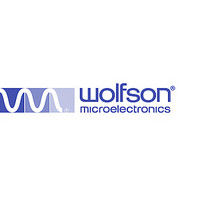WM8310GEB/V Wolfson Microelectronics, WM8310GEB/V Datasheet - Page 92

WM8310GEB/V
Manufacturer Part Number
WM8310GEB/V
Description
POWER MANAGEMENT SUBSYSTEM, 169BGA
Manufacturer
Wolfson Microelectronics
Datasheet
1.WM8310GEBV.pdf
(284 pages)
Specifications of WM8310GEB/V
Supply Voltage
7V
No. Of Step-down Dc - Dc Converters
4
No. Of Ldo Regulators
11
Digital Ic Case Style
BGA
No. Of Pins
169
No. Of Regulated Outputs
13
Operating Temperature Range
-40°C To
Rohs Compliant
Yes
Lead Free Status / Rohs Status
Lead free / RoHS Compliant
- Current page: 92 of 284
- Download datasheet (2Mb)
WM8310
Pre-Production
A minimum inductor charge time is applied in DCM mode; this leads to a minimum average inductor
current when operating as described above. Under very light load conditions, pulse skipping is used
to reduce the average inductor current to the level required by the load. In pulse-skipping mode, the
charge phase of selected cycles is not scheduled, and the load is supported by the output capacitor
over more than one cycle of the switching frequency. As well as supporting very light load current
conditions, this mechanism offers power savings, as the switching losses associated with the
skipped pulses are eliminated. A disadvantage of this is that the transient response is degraded even
further with respect to DCM. When the pulse-skipping behaviour is invoked, an increased output
voltage ripple may be observed under some load conditions.
This mode is suitable for a wide range of operating conditions. It supports the full range of load
currents, and offers efficiency savings under light load conditions.
Hysteretic Mode
Hysteretic mode is a power-saving mode. It does not support the full load capability of the DC-DC
converter, but offers efficiency improvements over the FCCM and DCM modes.
The control circuit in Hysteretic mode operates very differently to Pulse-Skipping mode. In Pulse-
Skipping mode, selected switching cycles are dropped in order to reduce the output current to match
a light load condition, whilst maintaining good output voltage ripple as far as possible. In Hysteretic
mode, the converter uses switched operation on an adaptive intermittent basis to deliver the required
average current to the load.
In the switched operation portion of the Hysteretic mode, the converter drives the output voltage up;
this is followed by a power-saving period in which the control circuit is largely disabled whilst the load
pulls the output voltage down again over a period of many switching cycles. The duration of the fixed
frequency bursts and the time between bursts is adapted automatically by the output voltage
monitoring circuit.
In this mode, the power dissipation is reduced to a very low level by disabling parts of the control
circuitry for the duration of selected switching cycles. This improves the overall efficiency, but also
leads to output voltage ripple and limited performance. This mode produces a larger output voltage
ripple than the Pulse-Skipping mode. In order to limit the degradation of the DC-DC converter
performance in Hysteretic mode, the control circuit is designed for a restricted range of load
conditions only. Note that the irregular switching pattern also results in degraded EMI behaviour.
Hysteretic mode and Pulse Skipping mode are both Pulse Frequency Modulation (PFM)-type modes,
where the switching pulse frequency is adjusted dynamically according to the load requirements. A
consequence of this frequency modulation is that the circuit’s EMI characteristics are less
predictable. In Hysteretic mode in particular, the EMI effects arising from the DC-DC switching are
present across a wider frequency band than is the case in CCM and DCM. It is more difficult to
effectively suppress the wide band interference, and this factor may result in Hysteretic mode being
unsuitable for some operating conditions.
Hysteretic mode is suitable for light load conditions only, and only suitable for operating modes that
are not sensitive to wide band RF/EMI effects. The output voltage ripple (and frequency) is load
dependent, and is generally worse than DCM mode. Provided that the EMI and voltage ripple can be
tolerated, this mode offers an efficiency advantage over the DCM / Pulse-Skipping mode.
LDO Mode
In this mode, there is no FET switching at all, and the converter operates as a Low Drop-Out
Regulator (LDO). In this mode, the FET switching losses are eliminated, as is the power
consumption of the DC-DC control circuit. Under suitable operating conditions, this provides the most
efficient option for light loads, without any of the EMI or voltage ripple limitations of Hysteretic mode.
As with any LDO, the output voltage is constant, and there is no internal source of voltage ripple.
Unlike the switching modes, the power efficiency of the LDO mode is highly dependent on the input
and output voltages; the LDO is most efficient when the voltage drop between input and output is
small. The power dissipated as heat loss by an LDO increases rapidly as the input - output voltage
difference increases.
PP, December 2009, Rev 3.0
w
92
Related parts for WM8310GEB/V
Image
Part Number
Description
Manufacturer
Datasheet
Request
R

Part Number:
Description:
Processor Power Management Subsystem
Manufacturer:
Wolfson Microelectronics plc
Datasheet:

Part Number:
Description:
Manufacturer:
Wolfson Microelectronics
Datasheet:










